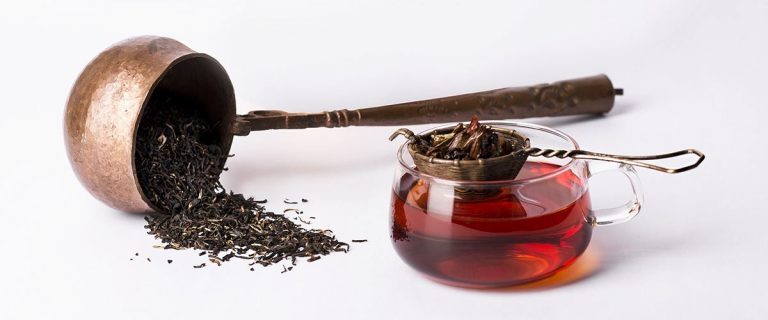The history of black tea can be traced back to China where it was first made. You’ll find that there are many types of black tea, some of which are a blend of black tea with different origins and some more exotic and non-traditional. Let’s explore black tea origins and its journey.
The Lapsang Souchong is a Chinese black tea, the original black tea and the first to be created, that’s still popular today. Its origins date back to the late 16th century and it’s name come from Lapsang, the high mountains of China’s Fuiyan area, and Souchong refers to small leaf teas.
“Souchong” indicates the leaves plucked, which are the fourth and fifth leaves of the plant. Unlike the top leaves and bud, the black tea leaves don’t hold as many aromatic compounds. The Souchong is roasted in a bamboo basket (honglong) that’s warmed over burning wood. This lends a smoky taste to the tea, which continues to define the Lapsang Souchong tea.
The story goes that in 1875, a man named Hu Yuanlong went up to Fujiyan to learn how to make black tea. He learnt the art and returned home to Qimen to recreate it. Thus was born the popular Keemun tea.
Black tea continued to be popular in China. When the East India Company decided to grow tea in Darjeeling, the gardens were planted with saplings from China. And black tea production began. Around the same time, the British also discovered another species of tea growing in Assam – the Camellia Sinensis Var, a black tea plant. Assamica is another variety that was popularly grown by the local tribes, processed at home and drunk. This variant was stronger than the Chinese tea, had longer leaves, and went on to become a popular base for breakfast teas in the West.
Also read:

Comments are closed.